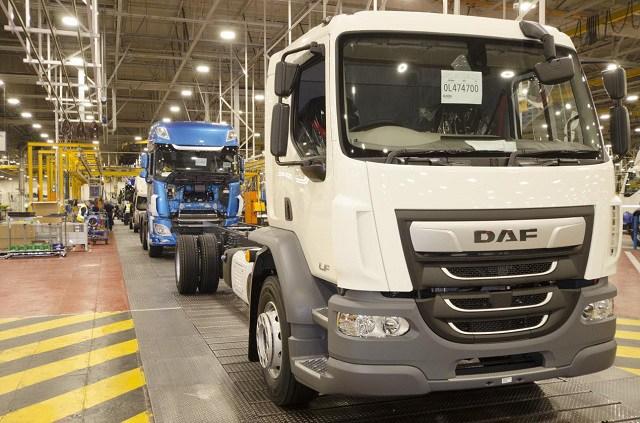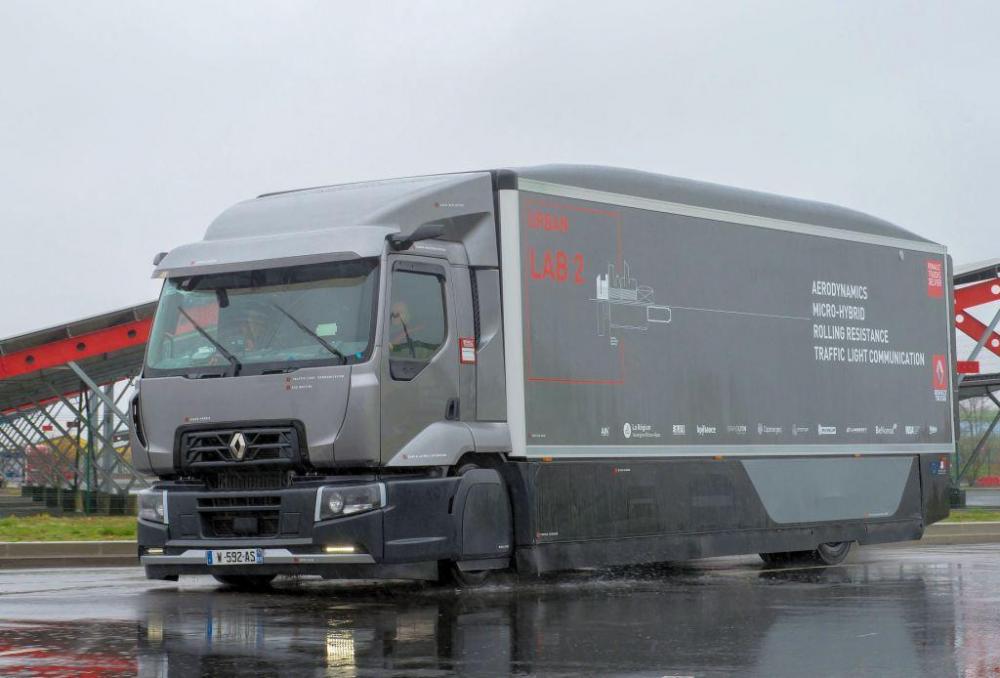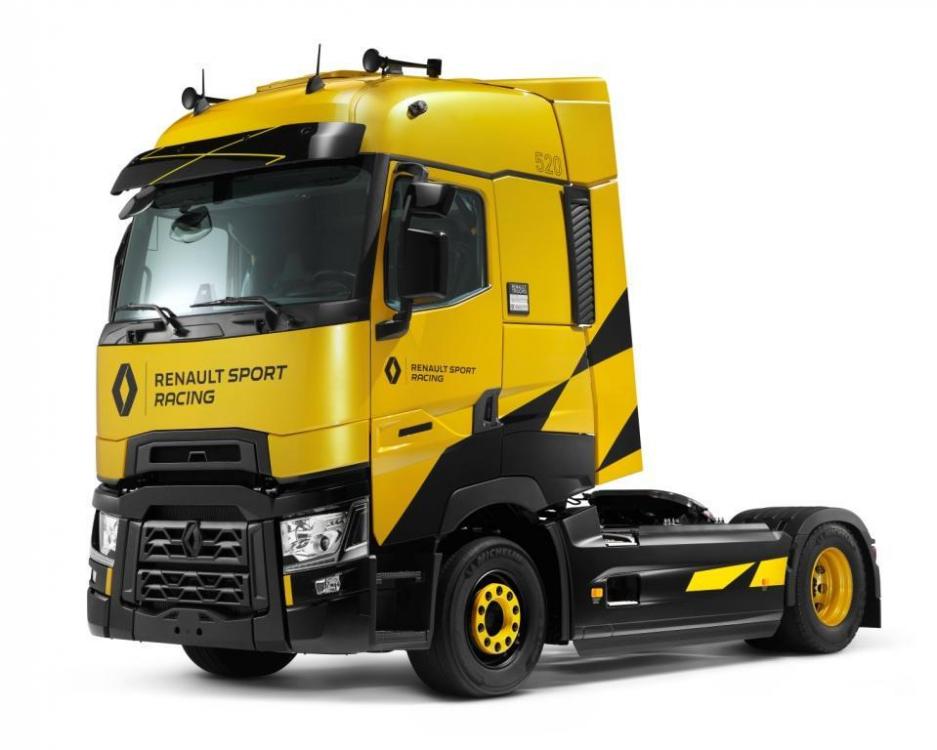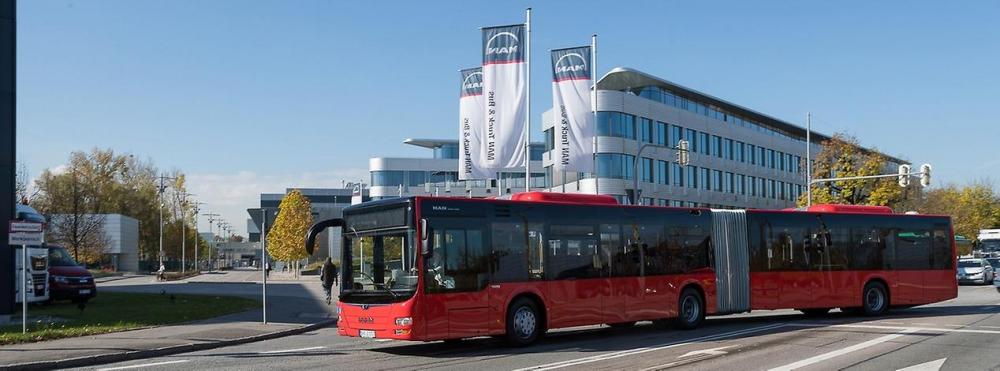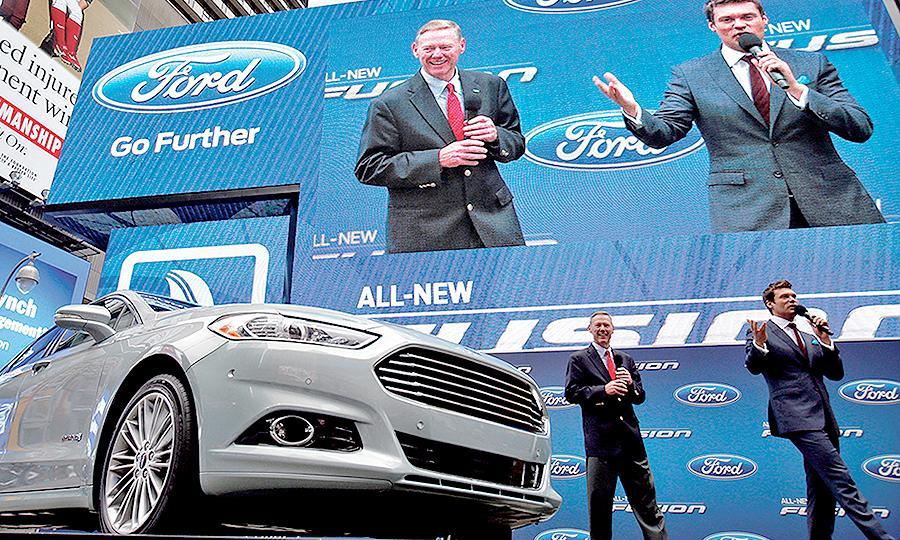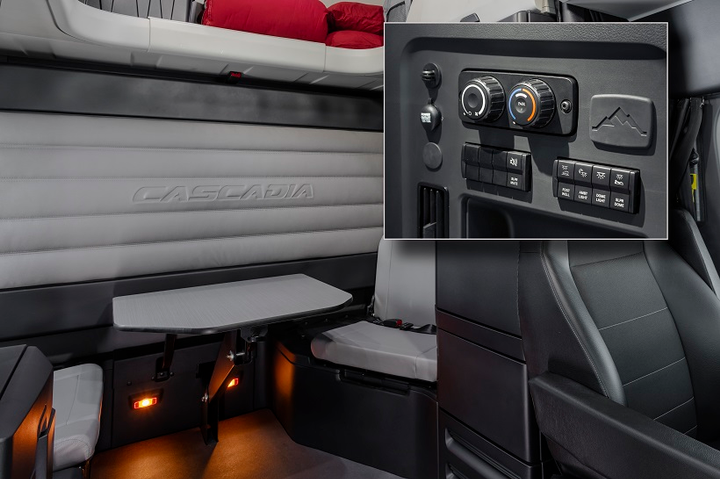
kscarbel2
Moderator-
Posts
18,895 -
Joined
-
Days Won
114
Content Type
Profiles
Forums
Gallery
Events
Blogs
BMT Wiki
Collections
Store
Everything posted by kscarbel2
-
HGV UK / June 12, 2018 Lancashire manufacturer, Leyland Trucks is this year celebrating twenty years of ownership and investment by US-based PACCAR. Since 1998, PACCAR has grown Leyland’s capabilities through strategic investments in technology, products and infrastructure. The Leyland Assembly Plant, which was already one of Europe’s most advanced truck manufacturing facilities, has benefited enormously from these investments. In 1998, the factory manufactured 9,000 trucks per year. Innovative improvements to the 710,000-square-foot facility – including a new PACCAR body production line, a robotic paint facility for truck chassis, electronic work instructions with touchscreen monitors, and the consolidation of two production lines into one has since then enhanced production by 72% to over 15,000 trucks per year. Installations of LED factory lighting and a new roof created a brighter work environment, contributing to record quality, efficiency and safety. In accordance with PACCAR’s commitment to environmental excellence, the factory achieved zero waste to landfill status in 2008. In 2003, PACCAR Parts constructed a Parts Distribution Centre on the Leyland site to provide support for the DAF UK and European Dealer Networks. It now operates as one of Europe’s main Parts Distribution hubs specialising in aftersales support, distribution, logistics and service for DAF and other truck makes, buses and trailers. “Leyland’s world-class status is maintained by our ability to leverage a community of expertise,” said Bryan Sitko, Leyland managing director. “Our loyal and committed workforce pools their combined years of truck building knowledge and shares that asset with new employees. These efforts are crucial to helping us deliver industry-leading quality trucks built by quality people.” Today, Leyland manufactures the full DAF product range of LF, CF and XF vehicles, 40 percent of which are exported around the world. .
- 1 reply
-
- 1
-

-
Commercial Motor / June 12, 2018 MAN’s new Steering Brake has resulted in the most maneuverable 8-wheel tipper we’ve ever tested. .
-
Liebherr Press Release / July 1, 2018
-
Volvo Trucks - The story behind the Volvo FH (Volvo FH 25 years)
kscarbel2 replied to kscarbel2's topic in Trucking News
. -
Fuel savings of 12.8% enable Urban Lab 2 to meet its targets
kscarbel2 replied to kscarbel2's topic in Trucking News
-
Renault introduces limited edition "Sport Racing" trim package
kscarbel2 replied to kscarbel2's topic in Trucking News
-
Renault Trucks Press Release / July 4, 2018 After eight months of development and seven months of testing its Urban Lab 2 vehicle, Renault Trucks has recorded a 12.8% reduction in fuel consumption and CO2 emissions in urban and peri-urban environments, compared to a standard vehicle. This result was obtained by optimising aerodynamics, the drive train, tyres and vehicle-infrastructure communication. Reducing the fuel consumption and CO2 emissions of its vehicles remains a core concern for Renault Trucks. The EDIT (Efficient Distribution Truck), collaborative project was launched in 2016, involving Renault Trucks and six partners, namely Valeo, Lamberet, Michelin, BeNomad, INSA de Lyon (LamCoS) and IFSTTAR (LICIT). The aim of the project was to achieve a 13% reduction in fuel consumption in urban and regional use for controlled-temperature trucks. The project produced the laboratory vehicle, Urban Lab 2, which, after seven months of testing and 4,500 km of driving on open roads or a roll-bench, achieved the initial targets. Urban Lab 2 uses 12.8% less fuel than the Renault Trucks D Wide (the reference vehicle), totalling a reduction of 3.5 litres of fuel and 9kg of CO2 per 100 kilometres. Test cycle and measuring methods To build a test cycle that was statistically representative of controlled-temperature distribution use, engineers at Renault Trucks used a database containing over 8,000 km of measurements. This open-road cycle consists of 12 km in urban environments, 50 km on regional roads and 57 km on motorways. Prior to testing, both the Urban Lab 2 and the reference vehicle were run in on the roll-bench and a detailed performance report of the drive trains of the vehicles was drawn up to ensure the two vehicles used for the project were representative. Testing was performed on roads, the roll-bench (where road and temperature conditions are simulated, controlled and reproducible) and using simulation software in order to correlate the measurements. Alongside this, tests were conducted with a reference vehicle with drive train and geometric characteristics similar to the laboratory vehicle (D Wide 19 t and 280 hp, fitted with a Lamberet refrigerated body). Each of the technologies developed under the project was evaluated separately. Assessment of aerodynamic improvements In collaboration with Lamberet, Renault Trucks worked on the aerodynamics of the truck and refrigerated body. To improve airflow, evaporators were fitted into the roof of the body, whilst the refrigeration unit was installed in the wheelbase of the vehicle. Aerodynamic features were added, including rear spoilers and retractable textile side deflectors jointly designed by Renault Trucks and Lamberet. Access steps, streamlined wheel covers, a roof deflector, spoiler and cabin side deflectors were also fitted. Last but not least, a system of cameras replaced conventional wing mirrors. Improvements resulting from aerodynamic fittings were measured on the motorway section of the test cycle. These measurements were recorded early in the morning to avoid any disturbance caused by wind, the speed of which was recorded at three separate points to ensure weather conditions were identical for the Urban Lab 2 and the reference vehicle. The test protocol was repeated seven times to ensure reliability of the results. The results obtained were correlated using simulation to measure gains over the full cycle. Differences between tare weights and electricity consumption between the two vehicles were taken into account in the simulations. The results of these tests confirmed that optimising aerodynamics is one of the key levers for reducing the fuel consumption and CO2 emissions of distribution vehicles, especially when used in peri-urban environments. Integration of the micro-hybrid system A combination of micro-hybrid and Stop & Start technologies, designed with Valeo, was tested on the Urban Lab 2. Several micro-hybrid system operating strategies were tested to maximise the energy recovered both during braking and over-run. In addition, considerable time and effort was devoted to engine stop/start strategies to reduce time and minimise vibration. Three types of micro-hybrid system consumption tests were performed on the roll-bench: - without the micro-hybrid system, in the standard configuration; - with the micro-hybrid system, without the Stop & Start system; - with the micro-hybrid system and the Stop & Start system. The Stop & Start and micro-hybrid systems confirmed significant gains in fuel consumption, especially in urban environments. Vehicle-infrastructure connectivity Urban Lab 2 features an on-board navigation system developed by BeNomad, together with a traffic light communication system. This infrastructure connectivity enables the Urban Lab 2 to receive information from traffic lights and calculate whether it is more efficient to accelerate or brake. To establish the impact of this technology on fuel consumption, measurements were first taken on the urban segments of the test cycle to characterise actual traffic and lights. A number of simulations took different traffic conditions into account and staggered start times were required to obtain reliable statistics. Tests were then conducted on a closed circuit, followed by testing in real conditions on open roads in Bordeaux. The latter tests confirmed the accuracy of the algorithm taking control of the vehicle, in deceleration phase, to optimise fuel savings. This driver-assistance technology provides significant improvements not only in fuel consumption and CO2 emissions, but also in terms of driver comfort. Reducing the rolling resistance of tyres Urban Lab 2 is fitted with Michelin prototype tyres, developed to reduce rolling resistance without negatively impacting other performance criteria, such as safety, grip or longevity. Tyre performance measurements were recorded on the regional and motorway sections of the cycle. Three testing sequences were conducted with the reference vehicle and demonstration vehicle to measure the increase in temperature and pressure of each of the tyres. On this basis, a simulation model specially developed by Michelin measures developments in rolling resistance throughout the cycle. This enables differences in fuel consumption to be measured more accurately, compared to the standard method of using a fixed optimal rolling resistance coefficient (ISO value). The EDIT project has confirmed the relevance of the technologies used in achieving the targeted reduction in fuel consumption. Work on the laboratory vehicle helps Renault Trucks to better understand the physical mechanisms that lead to this reduction and develop the technical solutions of its future products, in particular to meet future CO2 emission standards. Although Urban Lab 2 was not designed to be marketed in its current form, the most effective technologies in terms of performance may well be integrated in production vehicles. .
-
Renault Trucks Press Release / July 3, 2018 Renault Trucks and Renault Sport Racing have combined their expertise to produce the T High Renault Sport Racing. This special series, featuring Sirius yellow paint – the iconic colour of the F1 Renault Sport Racing team – is being limited to 99 vehicles. Renault Trucks has joined forces with Renault Sport Racing to design the T High Renault Sport Racing, the new limited edition of the flagship of its long distance range. This vehicle is being produced at the Bourg-en-Bresse plant and, like all other Renault Trucks, carries the Guaranteed Made in France certification. This limited series, boasting an elegant, sporty look, features Sirius yellow paint, which is the iconic colour of Renault Sport Racing Formula One, together with the yellow and black check that forms the graphic identity of Renault Sport models. Different textures and shades of black contrast with the yellow: the wing mirrors of the T High Renault Sport Racing have been given a coat of shiny black paint, as have the diamond and the radiator grill. To highlight the sporting design of the vehicle, the yellow and black check features again on the side deflectors. Last but not least, each vehicle of this limited series has a numbered black ID plate. The cabin has also been specially designed, featuring top of the range equipment and yellow and black colours to match the exterior. The Recaro® seats and steering wheel are both covered in black leather with yellow stitching. The bunk and floor mat also have yellow stitching, whilst the panoramic dashboard has a carbon finish and ventilators are circled in yellow. And to complete the sporting look, the seat belt is fitted with a yellow sleeve. The T High Renault Sport Racing combines on-board comfort, driving pleasure and performance. It has a completely flat floor and is fitted with a 13 L 520 hp engine and an Optidriver automated gearbox. .
-
MAN Truck & Bus Press Release / June 28, 2018 The coming years will see a noticeable increase in the number of MAN buses with the striking red colour of DB regional buses. Between 2019 and 2022 up to 1,000 buses of the models Lion’s City and Lion’s Intercity may be put into operation by 31 German regional bus companies belonging to DB Regio AG. MAN’s bid impressed both in terms of vehicle tender as well as framework agreements for optional service contracts and spare parts supply. “We believe the fact that Deutsche Bahn, which is an excellent reference customer, chose MAN’s bid in their current tender, is an extraordinary sign of faith in our bus products and associated services,” states Joachim Drees, Chairman of the Management Board at MAN Truck & Bus AG. “This decision is a testament to the efficiency, technology and driving comfort of our city and intercity buses.” The contract includes all length variations of the low-floor city buses as both a solo bus and articulated bus from 12 to 18.75 m. With their wide, low-floor entrances and large special use areas with space for wheelchairs and pushchairs, city buses provide quick and comfortable access for all passengers. If required, there is also ramp access at door 2. The passenger area also has a high-contrast visual design to allow passengers with visual impairments to easily find their way around, and stop request buttons come with braille. These features make the new DB Regio buses an appealing public transport choice for all. Modern Euro 6 engines provide between 280 to 360 hp (206 – 265 kW) for a pleasant journey with low emissions. In addition to Lion’s City city and intercity bus variants, the contract also includes the MAN Lion’s Intercity intercity high-floor bus in lengths of 12.2, 13 and 13.2 m. These also have modern D08 engines installed in the rear area with 250 or 290 hp (184 or 213 kW), which meet the latest emissions standard. “The German MAN distribution company has never concluded a framework agreement of this size before. This is an absolute record and the fruit of the outstanding work of our employees from Bus Sales and the After Sales department,” concluded Holger Mandel, the Chairman of the Management Board at MAN Truck & Bus Deutschland. Deutsche Bahn and MAN Truck & Bus continue their strong, long-standing business relationship by signing this contract recently. Since 2015 there has been a master agreement in place regarding the supply of local short distance buses/coaches. MAN delivered approximately 700 of these vehicles to DB Regio Bus in the past three years. “We are very pleased that our cooperative and trusting collaboration will continue,” said Frank Krämer, Head of Bus Sales at MAN Truck & Bus Deutschland, at the signing of the contract. In the past year MAN has delivered over 220 city and intercity buses to DB Regio Bus. “We are predicting a similar figure for the current year,” states Krämer. Deutsche Bahn is the largest provider of bus transportation in Germany with approximately 633 million passengers in 2016. The bus division is part of the passenger transport department, which is within the business area of DB Regio. Over 35 bus companies and shareholdings provide transport across all of Germany. Deutsche Bahn thus ensures regional mobility across a range of modes of transport. .
-
Daimler Press Release / July 3, 2018 Daimler Trucks is already conducting trials to test automated driving. The Future Truck 2025 kicked off the era of automated driving in long-distance traffic already in 2014. We were the first and demonstrated worldwide how our automated systems can be put to use. We test under a wide range of conditions to meet all demands. Our global presence and diversity are a huge advantage. We develop our systems within our network of all Daimler Trucks brands. .
-
DAF Trucks Press Release / July 2, 2018 Mission accomplished! Tested by German professionals and confirmed by the press: our new DAF CF and XF are proven to be 7% more efficient. #PureExcellence .
-
For Ford, Fusion was right car at wrong time Michael Martinez, Automotive News / July 1, 2018 DETROIT — Not since 1996 has the top-selling car in America come from a domestic brand. In 2012, it finally looked like Ford Motor Co. had an answer to the Japanese automakers' dominance of the segment. Knowing it had a potential hit on its hands, Ford marked the arrival of its second-generation Fusion with an elaborate celebration in New York's Times Square and "American Idol" host Ryan Seacrest. Ford touted the hybrid version's 47 mpg rating, but would-be customers were most impressed with the Fusion's handsome, aggressive styling, a bold departure from the traditional view of the enormous midsize sedan segment as bland family-haulers. "When that car came out, it looked like an Aston Martin," recalled Jim Seavitt, owner of Village Ford in Dearborn, Mich. Only six years later, the Fusion is headed for the scrap heap — at least in its current form. Ford announced in April it would discontinue all sedans in North America as its lineup evolves to virtually all crossovers, SUVs, pickups and vans. The Fusion's impending demise comes as a white flag from Ford in a segment Detroit had long been desperate to reconquer. But it's also a proclamation that winning the midsize segment no longer matters nearly as much as the profits pouring in from its pickup and utility vehicles. U.S. Fusion sales topped 300,000 in both 2014 and 2015, territory that domestic cars hadn't touched for many years. But it never managed to loosen the iron grip Toyota, Honda and Nissan had atop the segment. Coupled with the buyers' shift to crossovers and SUVs, Ford decided the Fusion wasn't worth saving, despite the brand equity it had built up over more than a decade. "As good of a product as Fusion has been for us, that C-D segment has declined dramatically, in breathtaking fashion, and it's accelerated over the past couple years," Mark LaNeve, Ford's vice president of U.S. marketing, sales and service, told Automotive News. Sales of the Fusion peaked at 306,860 in 2014, according to the Automotive News Data Center. They've fallen every year since, to 209,623 in 2017. That still hasn't stopped dealers from imploring Ford management to keep the Fusion name, an idea the company seems open to, potentially as a crossover-styled vehicle after 2021. While Ford has given end-of-production dates for its Taurus and Fiesta, it has been mum on the Fusion, and just this month introduced a new Fusion police hybrid vehicle. "We're going to have products that are new silhouettes that blur the lines between what you think of as a sedan today and a crossover today," LaNeve said. "We don't have any plans today, but could Fusion re-enter the market? It's certainly a possibility." 'Brought sexy back' The Fusion debuted in 2005 as a replacement for the venerable Taurus, which was discontinued in 2006 after degenerating into an unloved rental-lot staple (although Ford CEO Alan Mulally resurrected the Taurus name a year later for the company's full-size sedan). The midsize Fusion was meant to anchor the automaker's new lineup of fuel-efficient family sedans. Its popularity grew when Ford began racing Fusions in NASCAR in 2006, and sales surpassed the 200,000 mark in 2010, an important bright spot as Ford was recovering from the dark days of the recession. The second generation of the Mexico-built car was so popular, Ford expanded production to Michigan in 2013. The MSNBC show "Morning Joe" broadcast live from the Flat Rock Assembly Plant in suburban Detroit the morning Ford started Fusion production there, highlighting the U.S. jobs that the Fusion's success had created. While it never quite overtook the Toyota Camry, Honda Accord or Nissan Altima, the Fusion competed well, making solid inroads in coastal cities such as New York, Miami and Los Angeles. A 2015 Ford news release declared that the Fusion had "brought sexy back" to the midsize segment. Just two years ago, the Fusion was Ford's centerpiece at the Detroit auto show display, when it brought back Seacrest to tout the car's midcycle freshening. "It had a lot of positives," said industry analyst Dave Sullivan. "The styling of it turned heads when it came out, and it was one of Ford's truly big global sedans. It just didn't exactly prove to be what American buyers wanted." The Fusion's decline was hardly its own fault. As gasoline prices fell, demand for utilities and pickups surged. That was a welcome development for Ford, which makes most of its profits from those larger vehicles, but the business case for a third-generation Fusion became much tougher to justify. Ford ended U.S. production of the Fusion in 2016, after it became clear the lower-cost factory in Hermosillo, Mexico, could make more than enough to meet demand. Suppliers were informed late last year that plans for a 2021 redesign had been canceled. Ford wouldn't confirm the news for four more months, but CEO Jim Hackett in December gave hints as to why Ford was comfortable letting go. Vehicles such as the Fusion had for years been an alternative to gas-guzzling SUVs. But now, thanks to powertrain advancements, automakers are "starting to crack that code" and close the fuel economy gap, he said. "The reasons for the balance in history had more to do with fuel than customer preference," Hackett said. "And so, if you can get rid of the difference there because of fuel, you start to relieve the pressure of what kind of portfolio you have to have." Even in recent years, the Fusion has stood out from the competition. It finished 2017 still behind Japan's midsize trio but beat out the Chevrolet Malibu by nearly 25,000 units. If dealers' wishes come true and the nameplate sticks around in some fashion, Sullivan suggested it could likely be similar to a Buick Regal TourX wagon. "That's your new family sedan," Sullivan said. "It's just not what we've traditionally known." .
-
Kenworth Truck Co. Press Release / June 29, 2018 Raising the standard of durability, reliability, and performance in the North American Class 8 Marketplace. .
-
- 1
-

-
No my friend, I mean the Royale (and Royale II)....the COE. http://parkerclassics.com/index.php/trucks-for-sale/?a=1&VID=42777493 http://photobucket.com/gallery/user/peterbilttrucker2/media/bWVkaWFJZDo2MDQxNTAwMQ==/?ref= https://public.fotki.com/modeltrucks25thscale/truck_magazines/truck-and-trucking-/1973-overdrive-magazine/05-overdrive-magazi/may-1973-diamond.html#media
-
Battery Powered HVAC Available for New Cascadia Models
kscarbel2 replied to kscarbel2's topic in Trucking News
It's noteworthy, and troubling, that world class battery powered HVAC systems have already been available on major brand Chinese heavy trucks for three years. -
Heavy Duty Trucking (HDT) / July 3, 2018 A battery powered HVAC system is now available as a factory-installed option for new Freightliner Cascadia truck models. Available on all new Cascadia sleeper sizes and bunk styles, the battery powered HVAC system reduces emissions by allowing drivers to maintain a comfortable temperature overnight in their cab without idling the engine. Increased airflow from a floor outlet further improves driver comfort, and the system is integrated with the truck’s Optimized Idle feature for comfort. The battery powered HVAC system is able to provide 10 hours of cooling or 34 hours of heating to the cab when parked. The battery powered HVAC system has a dual evaporator design and the compressor only runs in parked mode to improve reliability. The system is fully integrated with vehicle power management to preserve engine starting. All system components are serviceable, and most can be reached without removing the cabinet where it is housed. For 60- and 72-inch sleepers, the new solid state electrical center of the Battery Powered HVAC system fits completely underneath the cab’s wardrobe cabinet, freeing up space in the baggage compartment. “The new Cascadia is built to provide optimal comfort both on the job and off, and the Battery Powered HVAC system contributes to creating that ideal interior environment for the driver,” said Kelly Gedert, director of product marketing for Freightliner Trucks and Detroit Components. .
-
Cummins to Acquire Silicon Valley’s Efficient Drivetrains Transport Topics / July 3, 2018 Cummins Inc. announced it is acquiring Silicon Valley-based Efficient Drivetrains Inc., which designs and produces hybrid and fully-electric power solutions for commercial markets. Terms were not immediately disclosed. The transaction is expected to close in the third quarter. Based in the Silicon Valley in California, EDI’s portfolio of hybrid-electric drivetrain systems, the EDI PowerDrive series, have traveled more than 6 million miles in a fleet setting in the United States and China. EDI’s products and diverse customer base will provide a springboard for Cummins into electrified markets, enabling the company a more immediate ability to grow market share, according to the Columbus, Ind.-based company. “As power needs and technologies continue to evolve, Cummins remains committed to innovations that will deliver the right power solutions for the right applications at the right time to help our customers succeed,” Cummins Chairman Tom Linebarger said in a statement. The vehicle manufacturers are evolving to include hybrid and electric technologies in their offerings, said Joerg Ferchau, EDI’s chairman and CEO. “EDI’s advanced portfolio of plug-in-hybrid and full electric technologies paired with Cummins’ industry leadership and focus on innovation will allow us to deliver best-in-class products, service and support worldwide,” Ferchau said. At the same time, during the past nine months, Cummins accelerated investments in electrification, acquiring UK-based Johnson Matthey Battery Systems and North America-based Brammo.
-
Green Car Congress / June 3, 2018 Cummins Inc. is acquiring Silicon Valley-based Efficient Drivetrains, Inc. (EDI), which designs and produces hybrid and fully-electric power solutions for commercial markets. Adding EDI to the Cummins portfolio is the latest step forward in Cummins’ efforts to become a global electrified power leader. EDI’s hybrid-electric drivetrain systems, the EDI PowerDrive series, have traveled more than six million miles in fleet settings in the United States and China. EDI’s products and diverse customer base will provide a springboard for Cummins into electrified markets, enabling the company a more immediate ability to grow market share. As power needs and technologies continue to evolve, Cummins remains committed to innovations that will deliver the right power solutions for the right applications at the right time to help our customers’ succeed. This acquisition will combine EDI’s talented workforce and electrification capabilities with Cummins’ expertise in developing and manufacturing the technologies that power the world. —Tom Linebarger, Chairman and CEO, Cummins Inc. Cummins began developing its electrification capabilities more than a decade ago. During the past nine months, it accelerated investment in this business when it undertook strategic efforts to build capabilities across the entire range of electric storage, as evidenced by the acquisitions of UK-based Johnson Matthey Battery Systems (earlier post) and North America-based Brammo (earlier post). Upon the addition of its fully-electric and unique four-mode hybrid powertrains, EDI will broaden Cummins’ electrification expertise and products. EDI’s hybrid system is the most versatile on the market today, able to switch, in real time, between fully electric, series and parallel modes. As the industry continues to evolve and OEMs move to include hybrid and electric technologies in their vehicle offerings, the combination of Cummins and EDI represents a tremendous opportunity for growth and category leadership. EDI’s advanced portfolio of plug-in-hybrid and full electric technologies paired with Cummins’ industry leadership and focus on innovation will allow us to deliver best-in-class products, service and support worldwide. Vehicle OEMs and fleets evaluating new electric and hybrid technologies prefer to work with well-established companies that have the depth and resources to provide the support that’s needed to scale into high volume mass production. Together, we can lead the electrification category, and provide exciting new options that the market will embrace. —Joerg Ferchau, EDI’s Chairman and CEO The closing of the acquisition of EDI is subject to the satisfaction of customary closing conditions and is expected to close in the third quarter.
-
I recall UPS running Diamond T 931s into the 1970s. But it was the later Diamond Reo Royale that really impressed me. The engineering was ahead of its time.
-
https://www.bigmacktrucks.com/topic/44540-volvo-trucks-announces-us-market-common-rail-other-powertrain-enhancements/
-
June 27, 2018 I am honored to be the Walter M. May and A. Hazel May Professor of Mechanical Engineering Massachusetts Institute of Technology. This endowed chair was made possible by the generous gift of the May family. Walter was a brilliant inventor of mechanisms who worked with industry to make machines to help make life better, and I will do my best to carry forth his legacy of invention and mentoring and looking forward to help the next generation to help themselves and others who will follow them. Alexander Slocum, Cambridge, MA https://www.legacy.com/guestbooks/mcall/walter-m-may-condolences/174515678
-
Since June 22, Cummins, Dana and WABCO have been posting new 52-week lows almost daily, as they did today. Today, both Paccar and Tenneco posted new 52-week lows.
BigMackTrucks.com
BigMackTrucks.com is a support forum for antique, classic and modern Mack Trucks! The forum is owned and maintained by Watt's Truck Center, Inc. an independent, full service Mack dealer. The forums are not affiliated with Mack Trucks, Inc.
Our Vendors and Advertisers
Thank you for your support!


